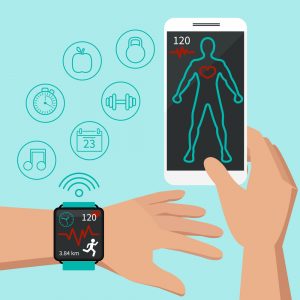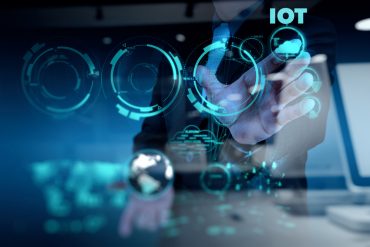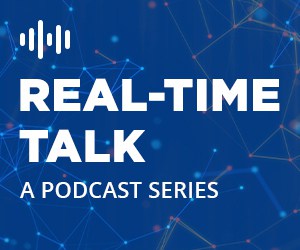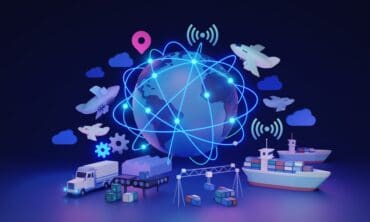
IoMT devices will create a sophisticated health-tech ecosystem that will pave the way for new technologies such as medical kiosks.
Remember your most recent healthcare interaction. It might have involved some type of tech-driven medical equipment – a glucose monitor or a blood pressure monitor that can be worn on the wrist.
A recent Deloitte report stated that there were more than 500,000 medical technologies available in 2018. And with the advent of smartwatches and bands, the number is growing exponentially.

In 2020, a huge number of internet-connected devices are available that are improving operational efficiencies and lowering the costs of healthcare services. With the technological advancement, many healthcare service providers have started to leverage the potential of the Internet of Medical Things (IoMT).
See also: Continuous Intelligence Enables New Healthcare Diagnostic Capabilities
What is IoMT?
The IoMT (Internet of Medical Things) is a sophisticated combination of medical devices and software applications that integrates with healthcare IT systems via wireless connectivity.
At the time when a vast number of IoT devices are benefiting multiple industries, the wave of interconnected sensor technologies, such as wearables and standalone devices, is paving the way for a brighter future of health-tech.
The Deloitte report states a surge in the number of connected medical devices that can generate, collect, and transmit or analyze health data. The transmission of data is possible via both the cloud repository and internal servers.
IoMT devices in 2020
The IoMT ecosystem includes the following seven types of IoMT devices.
Fitness Tracking Devices
Fitness tracking devices are consumer wearables, equipped with sensors, that can collect, analyze, and transmit the physical activity data of an individual to their smartphone applications. These devices mostly use fitness tracking mobile apps to showcase the data to the users.
IoMT devices that fall under this category include wristbands, smartwatches, smart shoes, smart shorts, and many other consumer wearable devices. All of these connect with their counterpart mobile apps to help users keep track of their fitness.
Clinical Grade Wearables
These IoMT devices are approved by regulatory bodies and are usually advised by physicians. In contrast to fitness tracking devices, these wearables are focused on improving chronic health conditions and illnesses. Before commercialization, clinical-grade wearables require clinical trials to be certified by the domestic medical regulatory body.

IoMT devices that are considered as the clinical-grade wearables include smart belts that are used by elderly patients to detect falls and provide hip protection; and chest straps that are embedded with ECG, heart rate, temperature, and respiratory rate sensors. The clinical-grade IoMT wearables give doctors access to the real-time health status of their patients and also promote patient engagement in medical treatments.
Remote Patient Monitoring Devices
To keep the discharged patients in continuous observation, hospitals use remote patient monitoring devices that accelerate the patient’s recovery time and prevent patient readmission into the hospital.
These remote monitoring IoMT devices empower the medical practitioner to pay virtual visits and keep a check on their patient’s health status post-discharge. It facilitates a platform for the hospitals to provide the best healthcare services at a lesser cost.
Smart Pills
The US food and drug administration recently approved smart pills that are nothing but drugs with ingestible sensors. These pills are used to help a patient be compliant with their prescribed medication. The sensor in the pill gets activated when it comes in contact with stomach fluids. Then the sensor transmits the data to some sort of wearable patch, usually attached to the patient’s arm, which further sends the data to a smartphone application.
Smart Pills technology has the potential to be implemented into many healthcare use cases, especially where the medication compliances are crucial for the patients. Disease such as Alzheimer’s is one of the examples where the patient is suffering from mental illness, and it becomes so hard to keep them compliant.
The mobile applications that come bundled with these pills analyze the data and share it with the physicians or caregivers. And if you still worry about what happens with the pills? Well, after the drug is dissolved, these tiny sensors are naturally discharged via the patient’s GI tract.
Clinical Monitoring Setup
Clinical Monitors include a wide range of IoMT devices that are used by physicians in their clinical setup. These devices are used to record and store patient’s health records electronically in the EHRs. These records are further stored in the cloud and used for specific consultations.
These clinical monitoring setups include IoMT devices such as digital stethoscopes that can store and transmit the heard sounds to a mobile app.
Hospital Devices
While the digital transformation has brought many other smart medical devices into the market, it also has upgraded the existing healthcare infrastructure. From MRI to ECG machines, wireless connectivity and cloud computing have been implemented to almost every corner of hospitals.

The majority of healthcare service providers have started keeping the patient’s medical records electronically. It has brought operational efficiencies and made medical records safer and easily accessible.
IoMT is also helpful in healthcare asset management. With the use of RFID chips, hospitals can track their expensive equipment to ensure safety. It is also helpful in inventory handling, meaning that the hospitals will never be unknowingly out of supplies.
IoMT is Making Healthtech a Reality
According to AlllTheResearch, the IoMT market is expected to reach USD 254.2 billion globally by 2026. To be noted that the market value for 2018 was valued at USD 44.5 billion. The AllTheResearch report also stated that the IoMT smart wearable device segment has constituted the largest market share and stood at roughly 27 percent.
The IoMT market growth is expected to pace up more with the integration of AI (artificial intelligence) into the connected ecosystem. It will make uses cases like automated prescription possible.
The rise of IoMT devices will create a sophisticated health-tech ecosystem that will pave the way for new technologies such as medical kiosks. These kiosks will empower medical practitioners to provide a part of healthcare services remotely. It will benefit rural communities by remotely providing urban-class medical facilities with lesser costs.





























